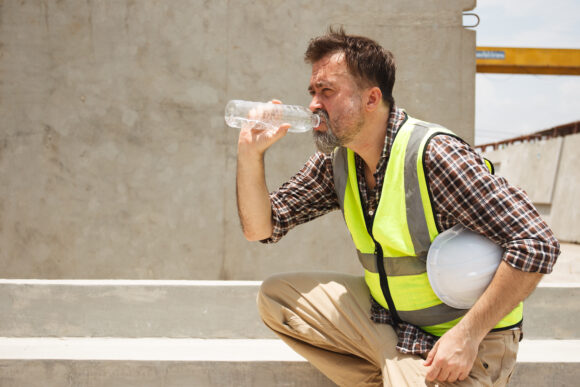With temperatures pushing above 90 degrees in parts of the Midwest and Northeast United States, many American workers are clocking in during what AccuWeather described as an “intense heat wave that is impacting more than 135 million people.”
Employers may adopt safety measures to protect employees from both the direct and indirect effects of extreme heat, and both state and federal governments offer recommendations for how to deal with scorching conditions.
“However, there are still concerns that these adaptations, behavioral changes and recommendations may not fully reduce the effects of excessive heat,” Sebastian Negrusa, the Workers Compensation Research Institute’s chief research scientist, said during a recent webinar addressing heat-related concerns.
In a new study, WCRI found that compared to temperatures between 65 and 70 degrees, the overall number of work-related injuries increased between 5% and 6% when the daily maximum temperature rose above 90 degrees.
This finding was based on National Oceanic and Atmospheric Administration temperature data from 24 states during the months of May to October through the years 2016 to 2021. That information was then merged with workers’ compensation claims data.
The direct effects of excessive heat are physiological; they include heatstroke, fainting, cramps and fatigue. Indirect effects of extreme heat manifest as a decline in psychomotor, perceptual or cognitive tasks, which could, for example, cause a worker to fall off a ladder.
According to the CDC, between 1981 and 2021, the annual number of excessive heat days from May through September has become more frequent in parts of the South, Midwest and Northeast.
When analyzing their sample, WCRI researchers found that the South is the region driving the work-related injury count increase, with increases of between 9% and 11% when temperatures exceed 90 degrees. That increase was 8% in the Northeast.
Traumatic injuries, such as fractures, contusions and lacerations, are “much more likely to occur when workers experience excessive heat than [sprains] and strains,” Negrusa said. These traumatic injuries are consistent with events like ladder falls.
The National Council on Compensation Insurance reported in a study earlier this year that both hot and cold days have more workers’ compensation injuries than milder weather days. However, the rate of increases and types of injuries vary depending on whether extreme temperatures are hot or cold or if precipitation is involved. The study compared claims to a mild-weather baseline (60-65 degrees Fahrenheit), with all other factors being equal. The NCCI study showed that all else being equal, injuries increase with heat. Impacts begin to show at just a few degrees above the baseline and rise to 5% when the temperature is in the low 80s. Injuries increase by 10% for temperatures above 100, according to NCCI.
Anae Myers, assistant actuary at NCCI, said that heat impacts the construction industry almost twice as much as other sectors. “There are fewer injuries on colder days (in construction), but the heat impacts are nearly twice as large as seen for all workers as construction is, of course, a physically demanding sector taking place largely outdoors and subject to seasonal fluctuations,” she said.
In the hottest cities, NCCI found construction injuries can hit a 16% increase over the baseline.
The full studies can be accessed on the WCRI and NCCI websites.
Topics Workers' Compensation
Was this article valuable?
Here are more articles you may enjoy.



 Marsh McLennan Agency to Acquire The Horton Group
Marsh McLennan Agency to Acquire The Horton Group  Hurricane Beryl Triggers Record Payout for Caribbean Insurer
Hurricane Beryl Triggers Record Payout for Caribbean Insurer  The Battle Over J&J’s Bankruptcy Plan to End Talc Lawsuits
The Battle Over J&J’s Bankruptcy Plan to End Talc Lawsuits  Biden Administration Raises FEMA Bar for Flood Resilience
Biden Administration Raises FEMA Bar for Flood Resilience 


